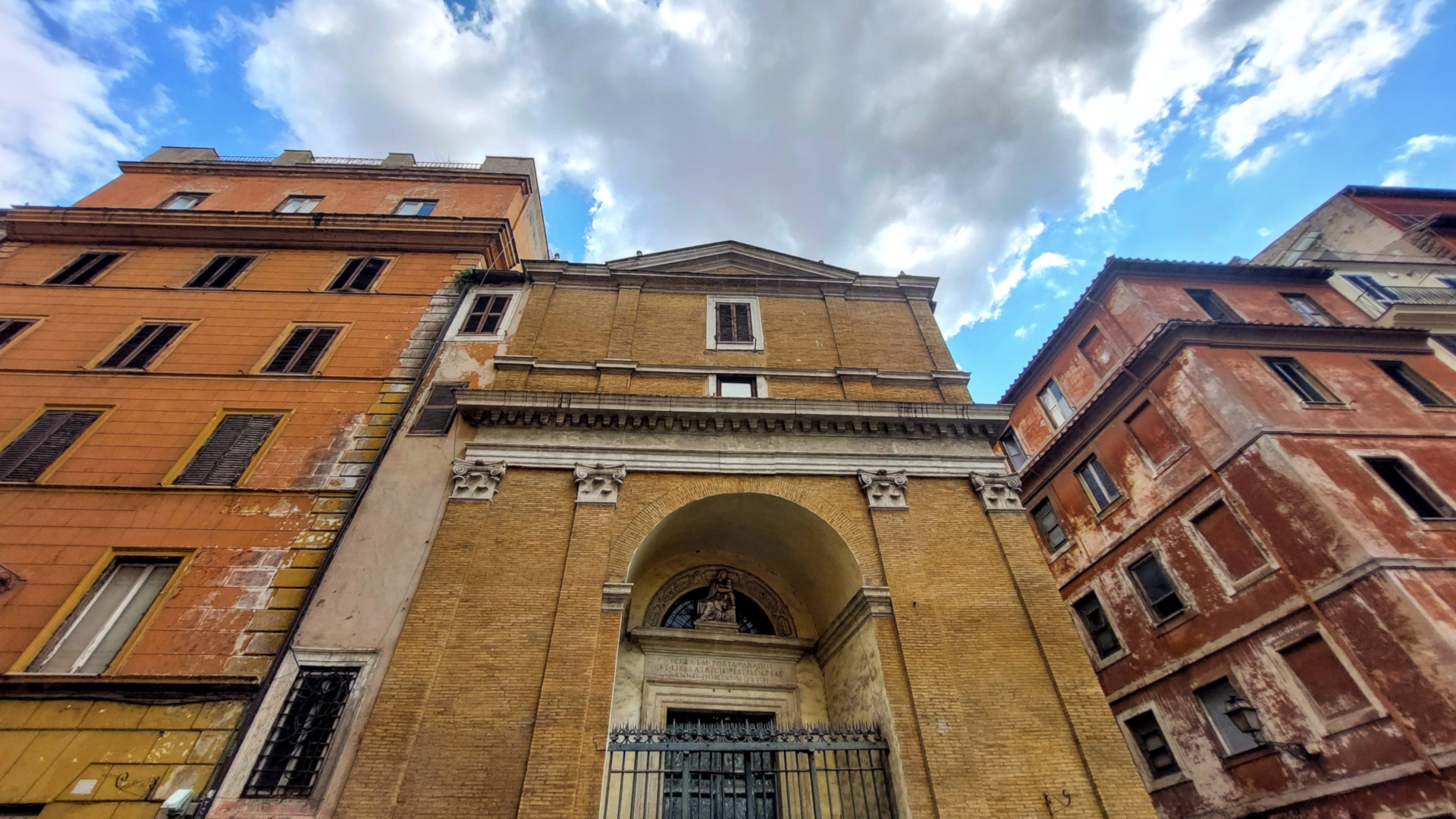
As is the case with the imposing church of San Giacomo in Augusta on the opposite side of the same block, the history of the small church overlooking Via Ripetta is also linked to the centuries-old events of the hospital of San Giacomo degli Incurabili, one of the oldest in the city along with the Santo Spirito in Sassia and the Santissimo Salvatore ad Sancta Sanctorum hospitals.
The details surrounding its construction are uncertain, but the church is certainly documented as early as the 14th century, the period when the hospital to which it was attached was founded. In the first quarter of the 16th century, the hospital complex (which had since been elevated to the rank of Archiospedale degli Incurabili due to its specialization in the care of people with syphilis, considered incurable) underwent a massive rebuilding project. The small chapel behind the complex was also enlarged and embellished according to a design by Antonio da Sangallo the Younger, thanks in part to a substantial bequest from the Spanish prelate Antonio de Burgos. The inscription that still exists today on the façade bears witness to its foundation and function.
The church’s current name also dates back to the 16th century. It might be due to its proximity to the garden enclosure of the nearby Mausoleum of Augustus, known as “paradiseiois” (from the Greek parádeisos, meaning gardens), or to the ancient cemetery of the hospital, which was closed in 1836 for health reasons due to a cholera epidemic. The church, used for funeral services, was therefore the gate that the faithful had to cross before entering the place of eternal rest, hopefully Paradise. Starting in 1644, following the bequest and testamentary dispositions of the physician Matteo Caccia, the church was renovated again. Its original layout was modified, without however altering it completely, and the interior decoration was carried out according to a design by Giovanni Antonio De Rossi.
Preceded by a small portico, the original two-storey façade designed by Antonio da Sangallo the Younger is an example of Renaissance architecture. Above the portal is a high relief by Andrea Sansovino depicting a “Madonna and Child”. The octagonal plan with a deep sanctuary and two side chapels is the result of the 17th-century transformation carried out by Giovanni Antonio De Rossi. The interior is richly decorated with stuccoes, polychrome marbles, sculptures and frescoes realized during the 17th century. The decoration of the church is completed by the funerary monuments of the two benefactors Antonio de Burgos (from 1526, allegedly by Baldassarre Peruzzi) and Matteo Caccia (from 1645, by Cosimo Fancelli), located above the two doors flanking the high altar.
Photo turismoroma
Information
The church is a place of worship auxiliary to the Church of St. James in Augusta, so for visiting procedures, please contact the Church of St. James in Augusta at the contact details above.
 Condividi
Condividi
Location
To find out about all accessibility services, visit the Rome accessible section.











































